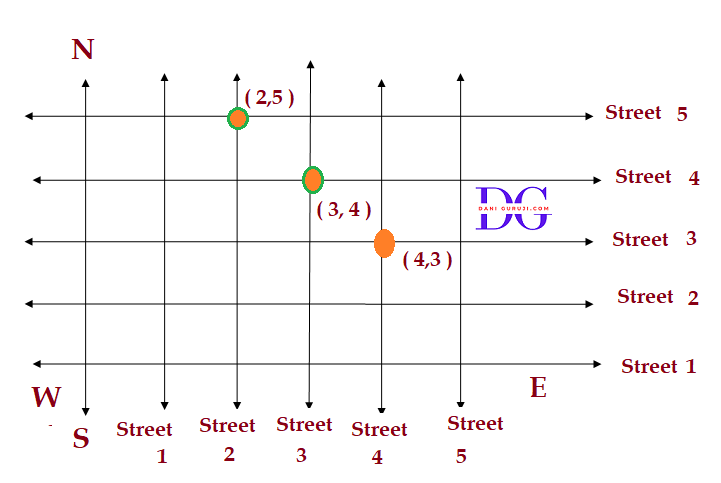How will you describe the position of a table lamp on your study table to another person?
Solution :
1. Consider the table as a plane (x and y axis) with the perpendicular line as the Y axis and the horizontal as the X axis.
2. Designate one corner of the table (where the two chosen edges meet) as the origin.
3. X-axis: Let the longer (or front) edge be the X-axis.
4. Y-axis: Let the perpendicular shorter (or side) edge be the Y-axis.
5.Join the line from the origin to the table light and make a point. The point’s distances from both the X and Y axes should be determined and expressed in terms of coordinates.
Imagine the bottom-left corner of the table is the origin (0, 0). Let the front edge be the X-axis and the left edge be the Y-axis. The base of my table lamp is located at (30 cm, 20 cm).
This means the lamp is 30 cm from the left edge and 20 cm from the front edge.
(Street Plan): A city has two main roads which cross each other at the center of the city. These two roads are along the North-South direction and East-West direction. All the other streets of the city run parallel to these roads and are 200 m apart. There are 5 streets in each direction. Using 1cm = 200 m, draw a model of the city on your notebook. Represent the roads/streets by single lines.
There are many cross- streets in your model. A particular cross-street is made by two streets, one running in the North – South direction and another in the East – West direction. Each cross street is referred to in the following manner: If the 2nd street running in the North – South direction and 5th in the East – West direction meet at some crossing, then we will call this cross-street (2, 5). Using this convention, find:
(i) how many cross – streets can be referred to as (4, 3).
(ii) how many cross – streets can be referred to as (3, 4).
Solution :
The unique identification of a cross-street using the ordered pair (x,y) highlights the fundamental principle of Coordinate Geometry: a point in a plane is defined by one unique pair of coordinates. While (4,3) and (3,4) are two distinct points/cross-streets, each notation corresponds to only one physical location.
Both the cross-streets are marked in the figure above. They are uniquely found because of the two reference lines we have used for locating them.
(i) Only one cross-street can be referred to as (4,3).
(ii)Only one cross-street can be referred to as (3,4).
Syllabus for class 10
Advanced courses and exam preparation.
Previous Year Paper
Advanced courses and exam preparation.
Mock Test
Explore programming, data science, and AI.
